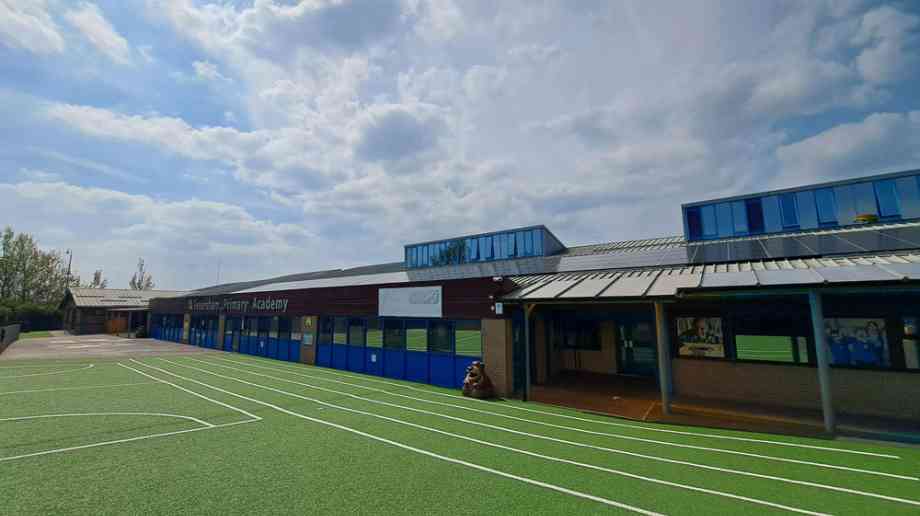
Solar: lighting the way to zero carbon schools
With energy bills soaring and the race to net zero intensifying, schools are turning to solar power as a practical, high-impact solution. Sue Wheat from Let’s Go Zero explores how solar is helping schools cut emissions, slash costs and spark climate action
Across the UK, schools are under pressure. Soaring energy bills and growing climate awareness are pushing them to act. At the same time, all schools must decarbonise to meet net zero targets.
Solar energy is a keystone solution. Rooftop panels cut emissions and bills, while providing clean, renewable power, and a hands-on way for students to learn about sustainability.
Momentum is building. In April, the UK government pledged £80 million for solar and energy upgrades in schools and NHS sites. The first major project under Great British Energy, it will add rooftop panels to around 200 schools, saving millions of pounds in energy costs.
Community-led schemes are rising too. In London, the Mayor’s Greener Schools programme offers up to £500,000 per borough (capped at £100,000 per school) to deliver low-carbon upgrades including solar PV. Maintained schools are eligible, with local councils coordinating applications.
Ashden’s Let’s Go Zero campaign supports thousands of schools nationwide with funding advice, expert help from regional Climate Action Advisors, and peer learning networks. Over 6,500 schools have already joined the campaign, proudly committing to zero carbon. They’re discovering solar power isn’t just about saving money, it’s about showing leadership.
Why schools are choosing solar
Solar panels offer a rare win-win: they benefit the planet, school budgets, and long-term energy security.
Energy is one of a school’s biggest costs. Generating electricity onsite cuts bills and reliance on fossil fuels. The government estimates a typical school could save up to £25,000 per year, freeing up funds for teaching or further green upgrades. Some even sell excess energy back to the grid.
Every kilowatt-hour of clean energy shrinks a school’s carbon footprint. Solar also enriches learning, letting pupils track real-time energy output and link science lessons to the school’s own systems.
Solar builds resilience too, helping schools
weather price hikes and power cuts while demonstrating to their communities that they’re part of the solution. Solar panels on the roof send a bold, visible message that sustainability matters. Policy backing and national momentum School rooftops are an untapped national asset. The government aims to triple solar capacity by 2030, with schools at the heart of that push. F The £80 million capital fund will support around 200 schools and community projects to install solar and make wider energy-saving upgrades. Local authorities and community energy groups will also receive nearly £12 million to drive local solutions.
National programmes like the Net Zero Accelerator Pathfinder, led by LocatED in partnership with the Barker Associates Consortium, are supporting 50 pioneering schools to lead the charge on decarbonisation. Through energy audits, expert guidance, and access to vetted suppliers, these initiatives are helping remove key barriers, particularly for schools facing funding or capacity challenges.
Funding solutions without the upfront costs
Let’s Go Zero helps schools explore alternative finance models, like working with community energy groups. These partnerships can install solar at no upfront cost, with savings shared over time.
Climate Action Advisors embedded across the UK offer tailored support, helping schools create practical climate action plans and unlock funding. Peer-to-peer learning is key too: schools share wins and inspire others across their regions. Here are some of the schools lighting the way.
Whiteknights Primary School: sparking change and saving thousands Whiteknights Primary in Reading installed an 18.4kWp solar PV system through the Net Zero Accelerator, estimated to generate 16,170kWh annually, meeting approximately 14 per cent of the school’s electricity needs, cutting emissions by three tonnes, and saving £3,200 per year. It adds to a previous installation, creating monthly savings of £130. The project kicked off wider change. Staff completed climate workshops and developed a whole-school climate action plan. “The training helped us build a vision and share it with the whole school,” said headteacher Bridget Reynolds. “The impact already is positive in helping us to reduce our carbon footprint.” Savings have funded further improvements, like better recycling at community events and verge protectors for green spaces. The school has cut gas use by eight per cent through heating optimisation and introduced timer-controlled plugs and EV chargers.
St Mary’s Axminster: pupils lead the way
Since joining the NZAP Pathfinder scheme, St Mary’s in Devon has embraced sustainability – from solar panels to student-led action. The £23,250 solar system now powers up to 40 per cent of the school day, saving £2,019 a year and cutting CO2 by three tonnes.
Sustainability is now part of learning. Pupils set up an eco club and run competitions to reward the most climate-friendly class.
“The children are so passionate, it’s infectious,” explains Ms Wood, St Mary’s sustainability lead. “It’s made me feel more passionate about what I’m doing – creating ripple effects throughout the school”.
Let’s Go Zero’s support was key in developing a tailored climate action plan. “Jen, our Climate Action Advisor, helped us see all the options and focus on what’s durable for our school and timeframe,” she explains.
Further upgrades include LED lighting, EV chargers, and better heating controls. Gas use has dropped nine per cent year-on-year. A gardening club and new website section are spreading the impact through the community.
Charles Warren Academy: reviving old panels to reclaim savings
At Charles Warren Academy in Milton Keynes, solar panels had fallen into disrepair and all electricity was coming from the grid. A Let’s Go Zero Climate Action Advisor flagged that repairing the system could be very cost-effective and they added on a new installation that was completed in March this year of 20 kWp. These are estimated to generate 20,240 kWh per annum which is expected to provide around £4,000 in annual savings.
The school is now reviewing other areas of energy use to plan its next steps. Feversham Primary School: a fast, painless solar switch with big results Feversham Primary school in Bradford proves how quickly solar can transform energy use. Installed over the holidays, the new system led to a 63 per cent drop in electricity consumption from the grid in April and May compared to previous years. Matt Keyse, Let’s Go Zero Climate Action Advisor working with the school says: “The school had an ideal site for solar PV having good roof space, a good aspect, and an open site with no obstructions. They managed to install it over the holidays causing little disruption to the school’s pupils. The pupils and staff are excited to have this new addition to their school and the ‘eco-warrior’ group are looking forward to sharing information about the carbon and financial savings with the rest of the school.”
Conclusion: the future is solar, and beyond
Solar is just the start. Many of the schools above are using their panels as a stepping stone, developing tailored climate action plans, installing EV chargers, reducing gas use, and embedding sustainability across their communities. Your school can do the same. Let’s Go Zero offers free expert advice, regional support, and the power of a 6,500-strong network of schools. Together, we can cut carbon, save money, and build a better future for our students. The sun is shining on school sustainability, if we invest in it together. Let’s power up.
letsgozero.org
Latest News
16/12/2025 - 09:19
The average funding rates will increase by 4.3% for under 2s, and by almost 5% for 3-and-4-year-olds.
15/12/2025 - 10:30
Local colleges are set to receive £570 million in government funding to expand training facilities in areas such as construction and engineering.
12/12/2025 - 11:39
The government has announced at least £3 billion to create tens of thousands of new specialist SEND places in mainstream schools.
12/12/2025 - 07:07
The findings suggest that children and young people attending schools in the North of England are less likely to take part in and benefit from residential visits.
11/12/2025 - 13:52
Ofqual has launched a 12-week public consultation on its proposed approach to regulating on-screen exams in GCSEs, AS and A levels.







